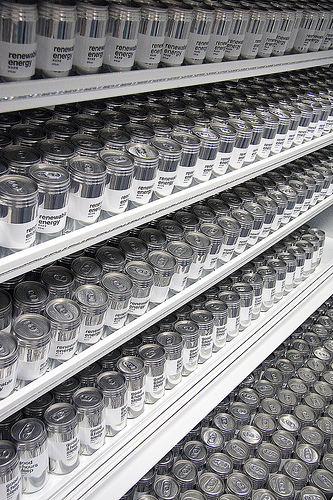 Indiana renewable package: No can do.Photo: JayskIndiana lawmakers finished their legislative session Wednesday without passing a renewable electricity standard, which might be just as well. This was the plan that would have defined “renewable” so as to include “clean coal” and nuclear energy (as reported earlier on Grist).
Indiana renewable package: No can do.Photo: JayskIndiana lawmakers finished their legislative session Wednesday without passing a renewable electricity standard, which might be just as well. This was the plan that would have defined “renewable” so as to include “clean coal” and nuclear energy (as reported earlier on Grist).
The plan would have required utilities in the state to produce 15 percent of their electricity from renewable sources by 2025. A later version of the (now dead) bill watered down the standard, allowing utilities to meet 25 percent of the target with clean coal, 25 percent with coal gasification (IGCC), 25 percent with nuclear, and 25 percent with efficiency. Theoretically, that would have let electricity providers get by without investing in any new bona fide renewable sources.
Indiana lawmakers also failed to pass a net-metering bill that would have increased the amount of electricity consumers can sell back to utilities for credit, encouraging small-scale home energy production.
For a rust-belt state working to remake its economy, this means another year without clean-energy incentives from the statehouse. State renewable advocates, naturally, were disappointed. They said even a weak renewable standard could have attracted wind and solar manufacturing companies by showing the state is receptive to their work.
“The governor and General Assembly continue to undermine the economy of our state by failing to enact renewable energy legislation, costing Indiana thousands of sustainable jobs and millions, probably billions, of dollars in investment,” Kerwin Olson, a lobbyist for the utility-consumers advocate group Citizens Action Coalition, wrote in an email.
He blamed the outcome on the influence of the state’s investor-owned utility companies. So did Democratic Rep. Matt Pierce, a renewable supporter from the relatively liberal outpost of Bloomington.
“There’s a subset of legislators who seem to take their cues from the electric utility industry, which doesn’t want anything to happen that’s going to create independent forms of generation,” Pierce said. “I think they really like controlling the power plants and the power, even though the best-case-scenario is that we might go from being 96 percent coal-dependent down to maybe 70 percent.”
Pierce said a renewable standard would have had limited economic potential anyway — 29 states already have them, and a modest standard wouldn’t have been enough to attract many renewable-energy companies. “With job creation, we’re already behind the times,” he said.
The state General Assembly will meet in a special session later this year to finalize the budget it did not approve in time, though Pierce said it’s very unlikely it will revive energy measures then.
Of course, a national renewable electricity standard, such as the one proposed in the Waxman-Markey energy bill, could supersede the current patchwork of state standards. There, too, there’s debate over just what “renewable” should mean: U.S. Rep. John Dingell has suggested that nuclear energy should count to make targets easier to meet.




